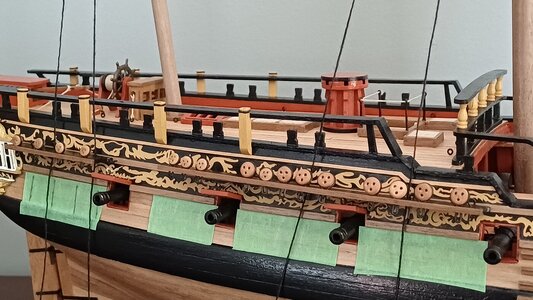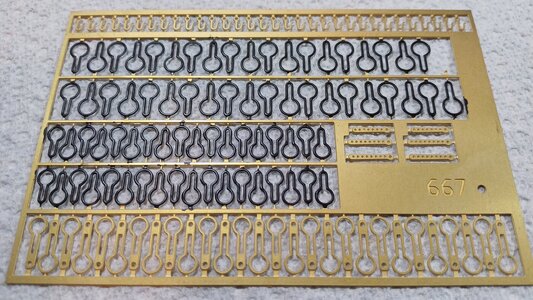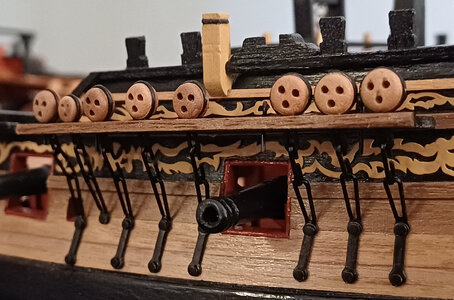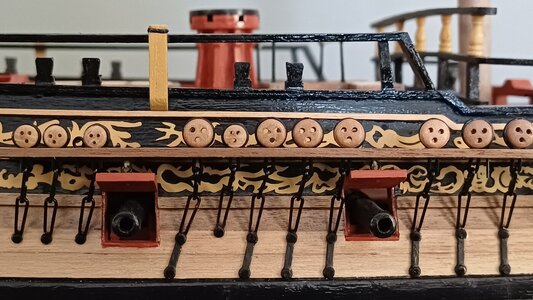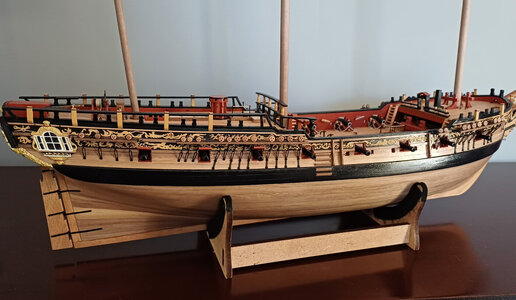All of the quarterdeck's significant furnishings are now in place. The upper capstan fitted snugly on its counterpart below and the hatchway received the appropriate rope and stanchion trimmings. It is worth noting that the ladder will interfere with the hatch on the deck below. I had warning of this and made adjustments to both ladder and the hatch width (below) to compensate.
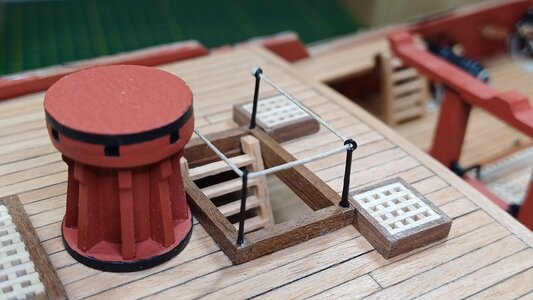
The binnacle is secured to the deck by ropes and eyebolts on either side. This is not according to kit specification but I had seen it done on other Fly and Pegasus builds and liked the logic behind it.
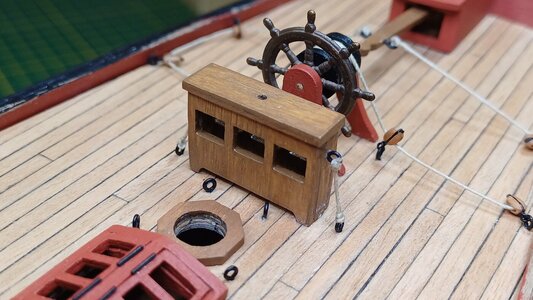
The ship's wheel configuration consists of the wheel assembly, tiller and housing, and rigging that binds the two together. Once the wheel and tiller are secured on deck, rope is bound to the rotating barrel of the wheel assembly and fed through blocks on either side of the deck to the tiller handle. I was happy to discover that the rudder swung in the correct direction when the wheel was turned
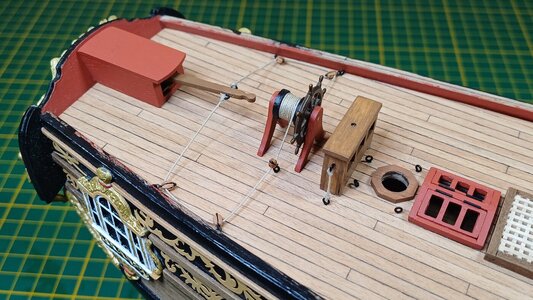
Overall view of the quarterdeck so far...
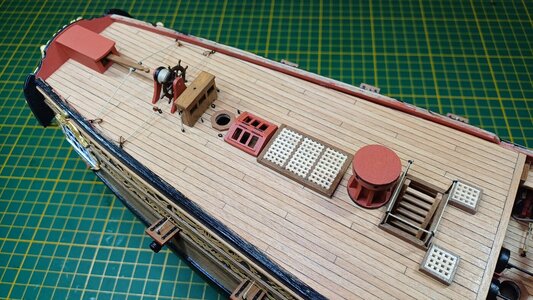
Thanks for checking in
Mark

The binnacle is secured to the deck by ropes and eyebolts on either side. This is not according to kit specification but I had seen it done on other Fly and Pegasus builds and liked the logic behind it.

The ship's wheel configuration consists of the wheel assembly, tiller and housing, and rigging that binds the two together. Once the wheel and tiller are secured on deck, rope is bound to the rotating barrel of the wheel assembly and fed through blocks on either side of the deck to the tiller handle. I was happy to discover that the rudder swung in the correct direction when the wheel was turned

Overall view of the quarterdeck so far...

Thanks for checking in
Mark
Last edited:




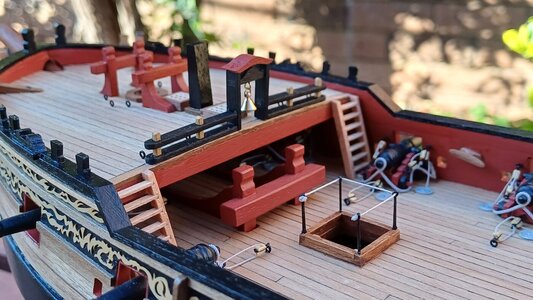
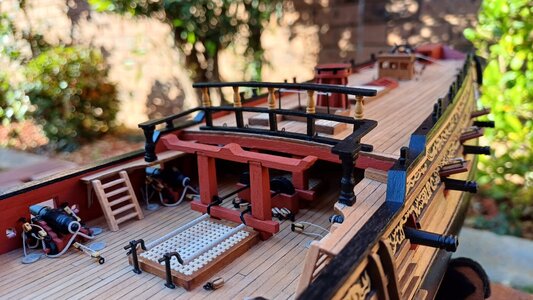
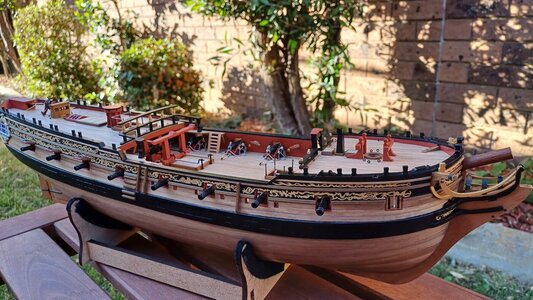


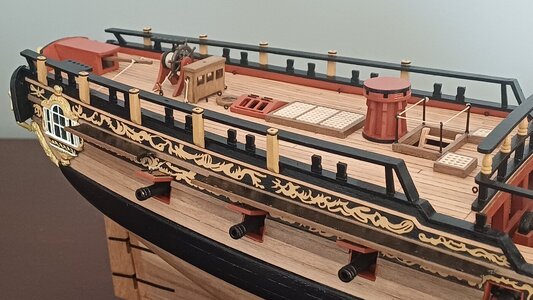
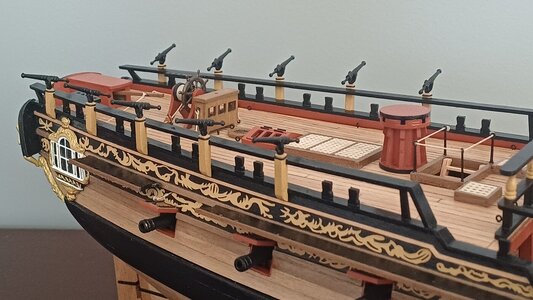
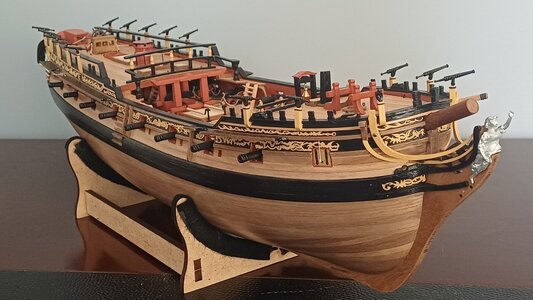
 . Cheers Grant
. Cheers Grant